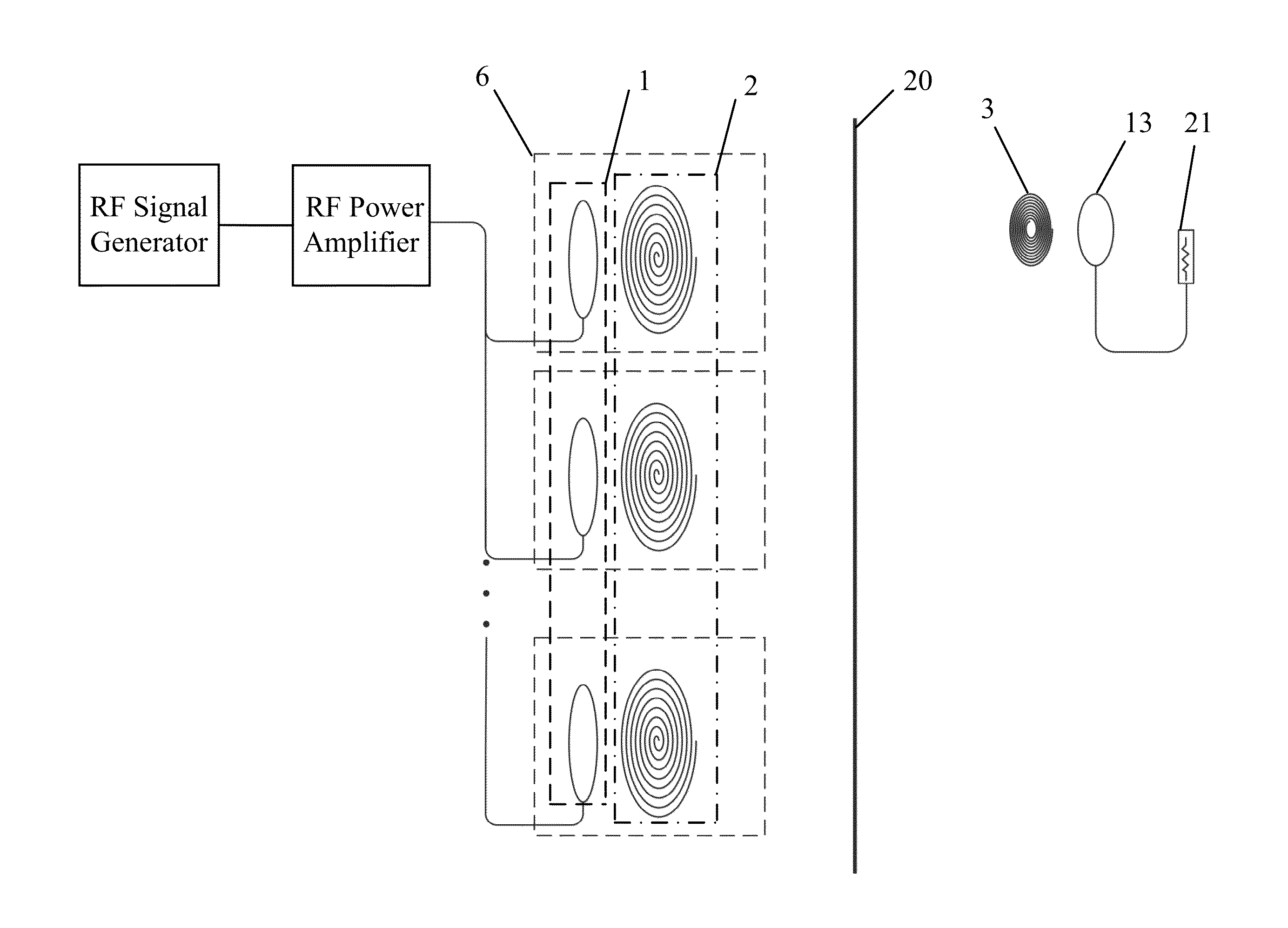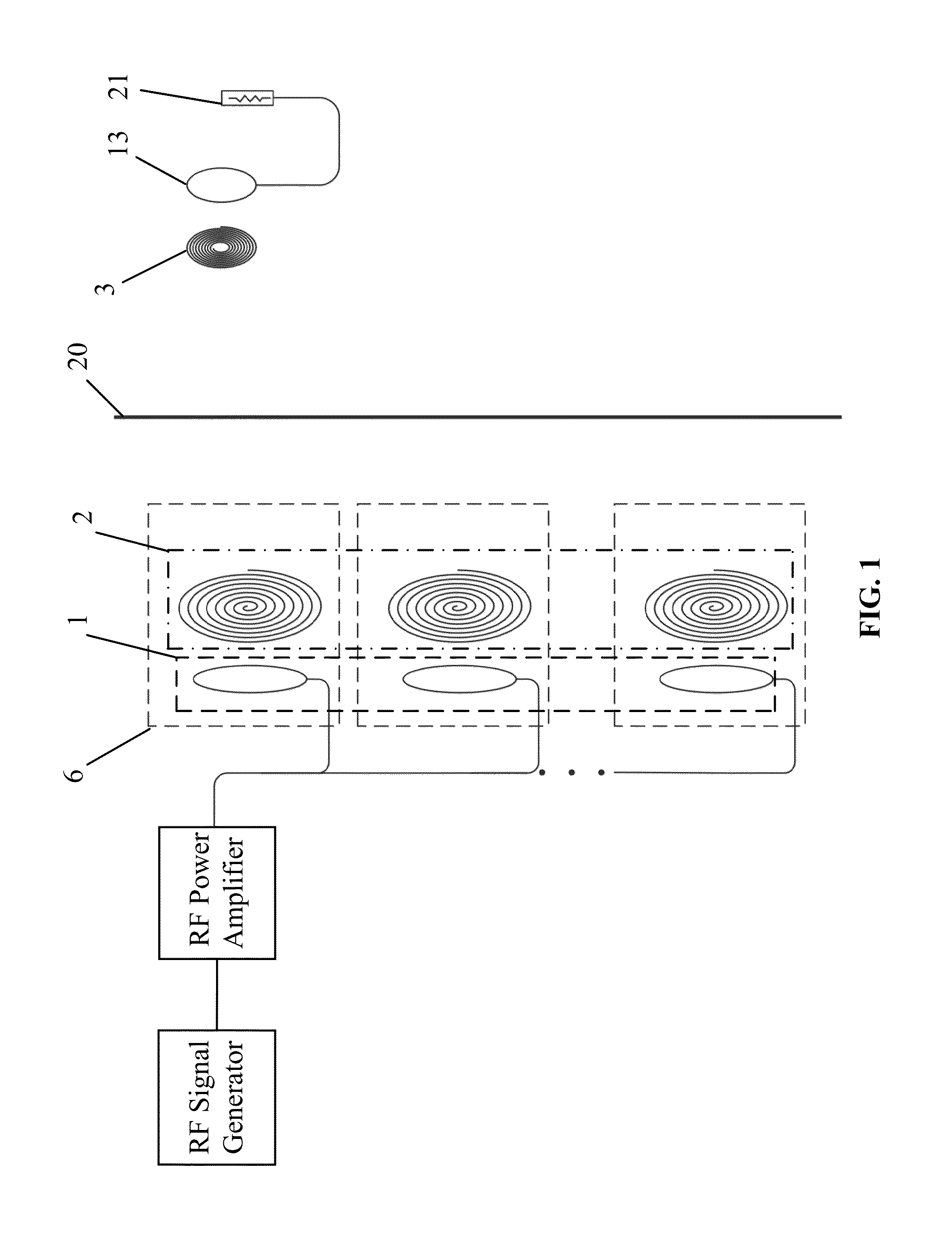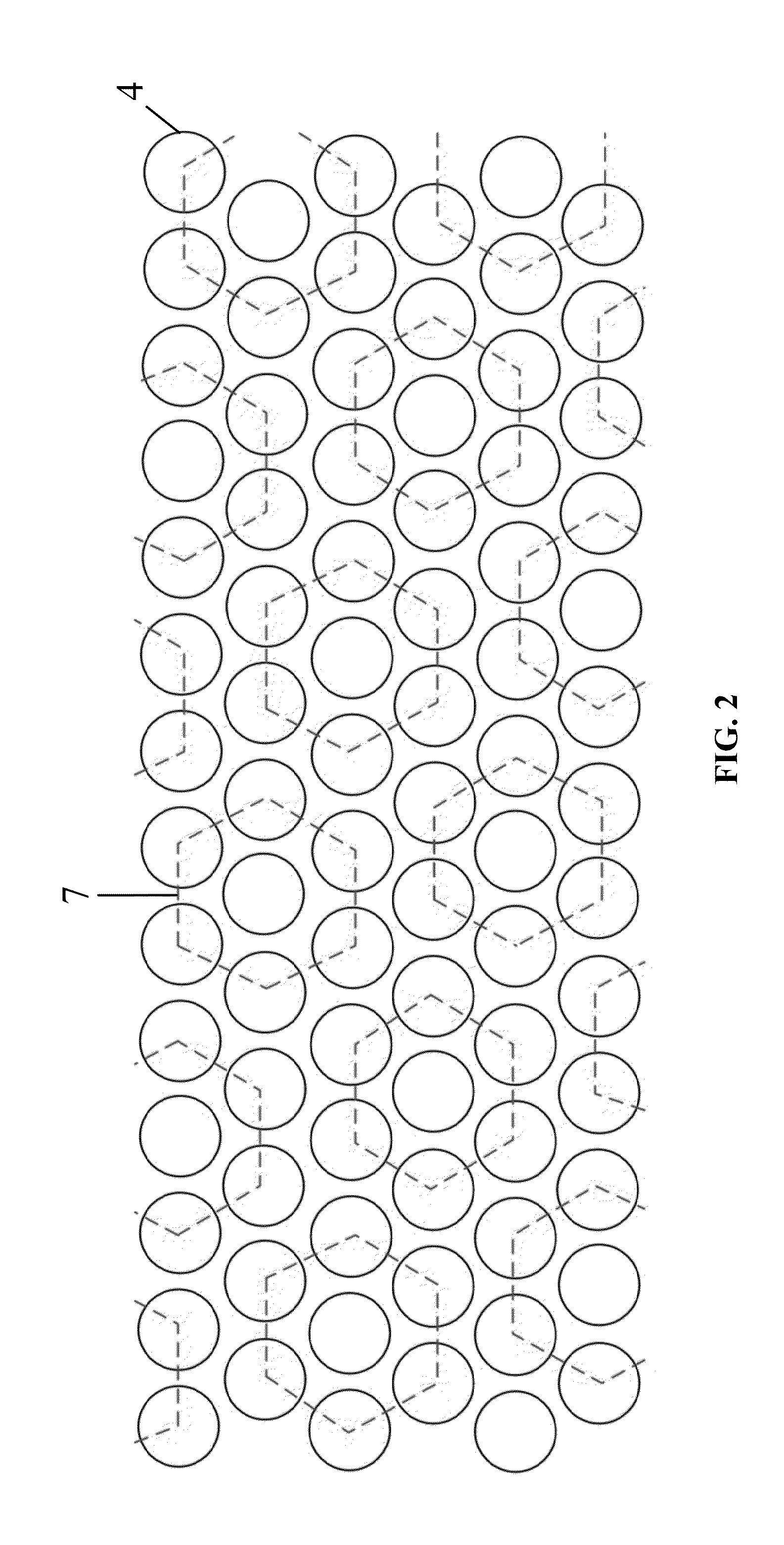Resonance-based wireless power transfer system
a wireless power transfer and wireless technology, applied in the direction of transformers/inductance circuits, circuit arrangements, inductances, etc., can solve the problems of supplying electrical power to implants within biological bodies (e.g., a human or an animal), remained a significant problem, and involves high cost and surgical risks. , to achieve the effect of being easily adjusted
- Summary
- Abstract
- Description
- Claims
- Application Information
AI Technical Summary
Benefits of technology
Problems solved by technology
Method used
Image
Examples
Embodiment Construction
[0029]FIG. 1 is a block diagram of a wireless electricity system according to one embodiment of the invention. As described in greater detail elsewhere herein, the wireless electricity system allows power to be transferred wirelessly from a source to a load based on the concept of evanescent resonant coupling mediated through the overlap of the nonradioactive near (e.g., magnetic) fields of two resonators (referred to as nonradioactive resonant coupling). In particular, in the scheme employed by the wireless electricity system, the coupling is implemented by the evanescent lossless stationary near-field rather than the lossy radiative far-field.
[0030]Referring to FIG. 1, the wireless electricity system for powering a medical implant comprises an RF signal generator operatively connected to a power amplifier. The RF signal generator generates an RF energy signal, which is amplified by the power amplifier to provide amplified RF energy signal. The wireless electricity system also comp...
PUM
 Login to View More
Login to View More Abstract
Description
Claims
Application Information
 Login to View More
Login to View More - R&D
- Intellectual Property
- Life Sciences
- Materials
- Tech Scout
- Unparalleled Data Quality
- Higher Quality Content
- 60% Fewer Hallucinations
Browse by: Latest US Patents, China's latest patents, Technical Efficacy Thesaurus, Application Domain, Technology Topic, Popular Technical Reports.
© 2025 PatSnap. All rights reserved.Legal|Privacy policy|Modern Slavery Act Transparency Statement|Sitemap|About US| Contact US: help@patsnap.com



